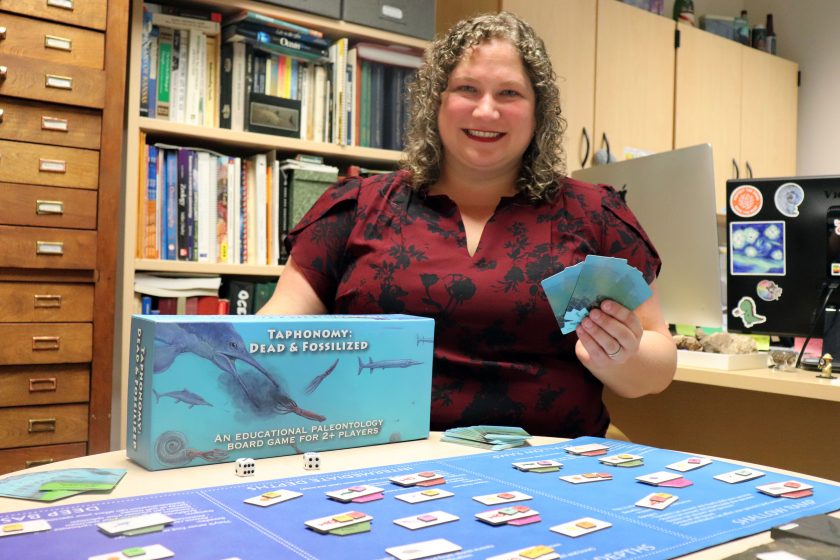UT Paleontologists Create Fossilization Board Game
June 7, 2022

A new board game created by paleontologists at The University of Texas at Austin challenges players to protect, preserve, and unearth Jurassic fossils – and learn a few things about how they form.
The board game – called “Taphonomy: Dead and Fossilized” – is the brainchild of Rowan Martindale, an associate professor at the UT Jackson School of Geosciences, and alumna Anna Weiss, who earned her doctoral degree from the school in 2019. The game teaches the fundamentals of taphonomy, the science of how fossils form.
“I think we have managed to make something that is both fun and educational,” Martindale said. “I hope to see people using it in their classes as well as for fun on family game night.”
Martindale and Weiss spent four years workshopping the game with students and colleagues at colleges and high schools all across the United States. Thanks to help from UT’s Texas Innovation Center and the Jackson School, the game is now professionally produced and available for purchase through the University Co-op.
Funds from game sales support research by students at the Jackson School, specifically developing educational paleontology activities.
The game puts players in the shoes of time-travelling paleontologists, transporting them back to the Jurassic, 183 million years ago, to find and protect organisms as they enter the fossil record. What follows is a game of chance and strategy, as players respond to different scenarios that may help or hinder the fossilization of specimens they compete to collect. The player with the best collection, which doesn’t always mean the most fossils, wins.
The fossils featured in the game are based on actual fossils Martindale and her research team have found at Ya Ha Tinda Ranch in Alberta, Canada. The site is known for its exceptionally preserved marine specimens dating back 183 million years, including squid, ichthyosaurs, fish, ammonites, brachiopods and other ocean dwelling creatures.
The Jackson School’s resident artist John Maisano brought some of these creatures to life in artwork featured on the game box and the playing cards.
“John’s beautiful depiction of the Jurassic marine ecosystem really brings the game to life,” said Martindale. “It’s rare that an educational item looks right at home on the shelf of a game store.”
Martindale and Weiss created the game first and foremost as a means to improve student’s understanding of the fossilization process. The game hits that mark, with 71% of undergraduate students saying it improved their knowledge in a 2020 study on the game.
The game can be played with two to four people and is recommended for ages 12 and older. Gameplay can be modified to a high school or university level and a description of how to include it in a classroom can be found on the SERC “Teach the Earth” website. Both the undergraduate and high school activities are part of the “Exemplary Teaching Collection.”
In addition to a professionally produced version, the game is also available as a free print-and-play version and as a virtual game on Tabletop simulator.
For more information, contact: Anton Caputo, Jackson School of Geosciences, 512-232-9623; Monica Kortsha, Jackson School of Geosciences, 512-471-2241.
